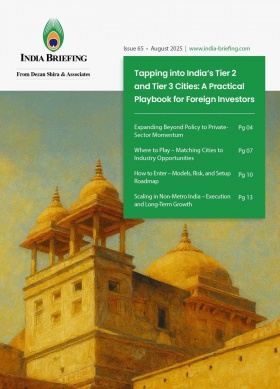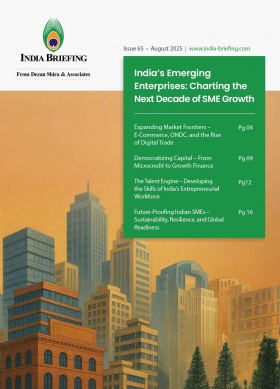Why Are Automobiles in India Becoming Cheaper After the GST Rates Change?
GST 2.0 has set in motion an unusual shift in India’s auto market, with prices dropping across everything from entry-level hatchbacks to premium SUVs. By removing the cess and simplifying tax slabs, the reform has eased the overall tax load, making cars more affordable and driving up demand.
The Indian automobile market is experiencing a rare phenomenon: prices across a wide spectrum of vehicles—from entry-level hatchbacks to luxury SUVs—are falling. This development comes in the wake of sweeping changes to India’s Goods and Services Tax (GST) structure, a reform that aims to simplify indirect taxation while stimulating demand.
At first glance, the headline numbers appear counterintuitive: small cars have been shifted into a lower 18 percent GST bracket, but luxury cars and SUVs face a steep 40 percent GST rate. However, the removal of the additional cess on vehicles has changed the arithmetic significantly, leaving many buyers pleasantly surprised. The price tags on showrooms across India are, in many cases, lighter than before.
What changed in the GST structure
The central government’s GST 2.0 reform, effective September 22, 2025, has collapsed India’s earlier four-slab structure (5 percent, 12 percent, 18 percent, 28 percent) into a simpler framework:
- Standard rates: 5 percent and 18 percent [Note: A 3 percent GST rate continues to apply only to gold and silver.]
- De-merit rate: 40 percent for luxury, sin, or environmentally unfriendly goods
Impact on automobiles
- Small cars: Petrol vehicles with engine capacity ≤ 1,200 cc and length ≤ 4 meters, or diesel vehicles ≤ 1,500 cc, now fall under the 18 percent GST slab (down from 28 percent).
- Commercial vehicles: GST rationalization brings buses, trucks, and ambulances under a uniform 18 percent slab, down from the earlier 28 percent. Likewise, three-wheelers, a critical mode of mobility in both urban and rural India, will also fall under the streamlined 18 percent rate, ensuring parity across vehicle categories.
- Luxury vehicles and larger SUVs: These are moved into the 40 percent slab. On paper, this looks like a hike from the earlier 28 percent, but under the old system, these cars attracted not only 28 percent GST but also an additional compensation cess of 17–22 percent, bringing the effective tax burden to nearly 50 percent. By eliminating the cess, the new system simplifies compliance while lowering the net tax on premium vehicles.
- Note: The reform also simplifies the treatment of auto components, which will now all be taxed at 18 percent regardless of their HS code classification—a move expected to ease compliance for manufacturers and suppliers.
CLICK HERE TO KNOW MORE: India’s GST Overhaul: What Goods Become Cheaper and What Gets Costlier
Why automobile prices are falling
Abolition of the cess
Previously, the cess acted as a double layer of taxation, significantly inflating prices. For example, a luxury sedan costing INR 5 million (US$56,757.8) ex-factory could end up closer to INR 7.5 million (US$85,136.8) after taxes and cess. Now, even with the higher 40 percent GST rate, the absence of cess means the total payable tax is lower.
Car makers passing benefits to consumers
Manufacturers and dealers are keen to boost sales volumes ahead of the festive season. Several car brands—including Hyundai, Mahindra, Toyota, and luxury players like Mercedes-Benz and BMW—have already announced significant price cuts, passing on most of the tax savings directly to customers.
Mid-segment cars also gain
For compact SUVs, sedans, and mid-sized hatchbacks, the drop from 28 percent to 18 percent GST is straightforward. This segment, which accounts for the bulk of India’s passenger vehicle sales, is seeing ex-showroom prices come down by tens of thousands of rupees, improving affordability for middle-class buyers.
Demand-side economics
Lower prices tend to stimulate demand. Automakers expect higher sales volumes, which in turn allows them to optimize production lines and reduce per-unit costs. This cycle reinforces price competitiveness in the medium term.
Car sales in India surge amid GST 2.0 reforms and festive season
India’s automobile market witnessed a sharp spike in demand as the festive season coincided with the rollout of GST 2.0 reforms. The revised tax structure lowered the GST on sub-4 metre cars from 28 percent to 18 percent and scrapped the compensation cess, making petrol, hybrid, LPG, CNG, and diesel variants within specified engine and size limits more affordable for buyers.
On September 22, 2025, Tata Motors recorded sales of nearly 10,000 passenger vehicles, supported by over 25,000 customer enquiries at its dealerships nationwide. Maruti Suzuki, meanwhile, achieved its best single-day performance in 35 years, delivering close to 30,000 vehicles after receiving more than 80,000 enquiries. Bookings for its small-car segment rose by 50 percent compared to typical festive trends, with dealerships extending hours to accommodate customer demand.
Hyundai Motor India also posted its strongest single-day sales in five years, with around 11,000 dealer billings, reflecting the combined boost of festive sentiment and reduced vehicle prices under GST 2.0.
How much cheaper are cars in India now?
The real impact is visible in the price lists released post-GST change:
|
Automobile Cost Comparison under GST 1.0 and GST 2.0 |
||||
|
Car brand |
Variant/model |
Price under GST 1.0 |
Price under GST 2.0 |
Price reduction |
|
Tata Motors |
Nexon |
INR 1 million-1.56 million |
INR 845,000-1.40 million |
INR 155,000 |
|
Safari |
INR 1.5 million-2.2 million |
INR 1.35 million-2.05 million |
INR 145,000 |
|
|
Harrier |
INR 1.4 million-2 million |
INR 1.26 million-1.86 million |
INR 140,000 |
|
|
Punch |
INR 600,000-800,000 |
INR 515,000-715,000 |
INR 85,000 |
|
|
Curvv |
INR 900,000-1.40 million |
INR 835,000-1.33 million |
INR 65,000 |
|
|
Tiago |
INR 500,000-600,000 |
INR 425,000-525,000 |
INR 75,000 |
|
|
Tigor |
INR 600,000-700,000 |
INR 520,000-620,000 |
INR 80,000 |
|
|
Altroz |
INR 700,000-900,000 |
INR 590,000-790,000 |
INR 110,000 |
|
|
Mahindra & Mahindra |
Bolero/Neo |
INR 800,000-900,000 |
INR 673,000-773,000 |
INR 127,000 |
|
XUV3XO Petrol |
INR 800,000-1.58 million |
INR 660,000-1.44 million |
INR 140,000 |
|
|
XUV3XO Diesel |
INR 999,000-1.47 million |
INR 843,000-1.31 million |
INR 156,000 |
|
|
Thar 2WD |
INR 1.15 million-1.76 million |
INR 1.01 million-1.62 million |
INR 135,000 |
|
|
Thar 4WD |
INR 1.30 million-1.90 million |
INR 1.19 million-1.79 million |
INR 101,000 |
|
|
Scorpio Classic |
INR 1.1 million-1.5 million |
INR 999,000-1.39 million |
INR 101,000 |
|
|
Scorpio-N |
INR 1.4 million-2.1 million |
INR 1.25 million-1.95 million |
INR 145,000 |
|
|
Thar Roxx |
INR 900,000-1.2 million |
INR 767,000-1.06 million |
INR 133,000 |
|
|
XUV700 |
INR 1.5 million-2.2 million |
INR 1.35 million-2.05 million |
INR 143,000 |
|
|
Maruti Suzuki |
S-Presso |
INR 427,000-612,000 |
INR 350,000-512,000 |
INR 129,000 |
|
Alto K10 |
INR 500,000-600,000 |
INR 392,000-492,000 |
INR 108,000 |
|
|
Swift |
INR 700,000-800,000 |
INR 615,000-715,000 |
INR 85,000 |
|
|
Dzire |
INR 800,000-900,000 |
INR 712,000-812,000 |
INR 88,000 |
|
|
Brezza |
INR 900,000-1.1 million |
INR 787,000-987,000 |
INR 112,000 |
|
|
Fronx |
INR 800,000-1 million |
INR 688,000-888,000 |
INR 112,000 |
|
|
Grand Vitara |
INR 1 million-1.2 million |
INR 893,000-1.09 million |
INR 107,000 |
|
|
Ertiga |
INR 800,000-1 million |
INR 754,000-954,000 |
INR 46,000 |
|
|
Toyota |
Fortuner |
INR 3.5 million-4.5 million |
INR 3.15 million-4.15 million |
INR 349,000 |
|
Legender |
INR 4 million-5 million |
INR 3.66 million-4.66 million |
INR 334,000 |
|
|
Hyryder |
INR 1.5 million-1.8 million |
INR 1.39 million-1.69 million |
INR 110,000 |
|
|
Hilux |
INR 2 million-2.5 million |
INR 1.74 million-2.24 million |
INR 252,000 |
|
|
Vellfire |
INR 9 million-10 million |
INR 8.72 million-9.7 million |
INR 278,000 |
|
|
Camry |
INR 4.5 million-5.5 million |
INR 4.39 million-5.39 million |
INR 101,000 |
|
|
Innova Crysta |
INR 2 million-2.5 million |
INR 1.82 million-2.32 million |
INR 180,000 |
|
|
Innova Hycross |
INR 2.2 million-2.8 million |
INR 2.08 million-2.68 million |
INR 115,000 |
|
|
Other models |
Up to INR 111,000 off |
|||
|
Hyundai |
Venue |
INR 794,000-1.38 million |
INR 726,000-1.26 million |
INR 124,000 |
|
Venue N-Line |
INR 800,000-1.4 million |
INR 681,000-1.28 million |
INR 119,000 |
|
|
Creta |
INR 1 million-1.4 million |
INR 928,000-1.32 million |
INR 72,000 |
|
|
Creta N Line |
INR 1 million-1.4 million |
INR 929,000-1.32 million |
INR 71,000 |
|
|
Alcazar |
INR 1.5 million-2 million |
INR 1.42 million-1.92 million |
INR 75,000 |
|
|
Tucson |
INR 2.2 million-2.8 million |
INR 1.96 million-2.56 million |
INR 240,000 |
|
|
Honda |
Amaze |
INR 700,000-900,000 |
INR 600,000-800,000 |
INR 100,000 |
|
Elevate |
INR 1 million-1.5 million |
INR 942,000-1.44 million |
INR 58,000 |
|
|
City |
INR 1.20 million-1.6 million |
INR 1.14 million-1.54 million |
INR 57,000 |
|
|
MG Motor |
Astor |
INR 1 million-1.5 million |
INR 946,000-1.44 million |
INR 54,000 |
|
Hector |
INR 1.5 million-2 million |
INR 1.35 million-1.85 million |
INR 149,000 |
|
|
Gloster |
INR 3 million-3.5 million |
INR 2.69 million-3.19 million |
INR 304,000 |
|
|
Kia |
Seltos |
INR 1 million-1.5 million |
INR 925,000-1.42 million |
INR 75,000 |
|
Sonet |
INR 800,000-1.20 million |
INR 636,000-1.03 million |
INR 164,000 |
|
|
Syros |
INR 950,000-1.67 million |
INR 799,000-1.49 million |
INR 186,000 |
|
|
Carens |
INR 1 million-1.5 million |
INR 952,000-1.45 million |
INR 48,000 |
|
|
Carens Clavis |
INR 1.10 million-1.6 million |
INR 1.02-1.52 million |
INR 78,000 |
|
|
Carnival |
INR 3 million-3.5 million |
INR 2.55 million-3.05 million |
INR 448,000 |
|
|
Skoda |
Kodiaq |
INR 3.5 million-4.5 million |
INR 3.17 million-4.17 million |
INR 330,000 |
|
Kushaq |
INR 1 million-1.5 million |
INR 934,000-1.43 million |
INR 66,000 |
|
|
Kodiaq |
INR 3.5 million-4.5 million |
INR 3.17 million-4.17 million |
INR 330,000 |
|
Sources: Autocar India, Kia Motors, Economic Times
Who benefits most?
Small car buyers
First-time buyers and budget-conscious families stand to gain the most, as small cars have shifted from a punitive 28 percent GST rate down to 18 percent. Car models such as the Maruti Suzuki Swift, Hyundai i10, and Tata Tiago are now significantly cheaper, widening access to mobility.
Luxury car buyers
Paradoxically, the biggest cheer is also coming from the luxury segment. Cars previously weighed down by a combined 50 percent tax burden are now cheaper by several hundred thousand Indian rupees, encouraging aspirational buyers and corporate fleets to reconsider purchases.
Automobile companies
With reduced sticker prices, manufacturers expect stronger demand. This is especially important at a time when India’s auto sector is navigating slowing exports, rising raw material costs, and a shift to electric mobility. The GST relief provides breathing space to ramp up production and sales.
Strategic rationale behind the reform
The government’s decision is not just about simplifying tax codes. It aligns with several broader economic objectives:
- Boosting consumption: Cheaper vehicles encourage spending in a sector that has strong backward linkages with steel, rubber, glass, and electronics.
- Supporting manufacturing: Lower domestic prices can strengthen India’s competitiveness against imported vehicles.
- Inflation management: Automobiles are a key item in consumer inflation baskets. Reducing prices helps contain headline inflation.
- Encouraging compliance: A single, transparent GST rate without cess reduces evasion and improves collection efficiency.
- Electric Vehicles (EVs): The government has chosen not to revise the GST rate for EVs, which continue to enjoy a concessional levy of just 5 percent. While this means their relative tax advantage over petrol and diesel vehicles narrows slightly under the new regime, the decision provides stability and predictability for automakers and consumers alike.
Caveats and challenges
While the headline is positive, not all segments or consumers will feel the full benefit.
- Incomplete pass-through: Some manufacturers may retain part of the tax savings to shore up margins.
- Imported luxury cars: Customs duties and shipping costs remain unchanged, meaning ultra-luxury imports may not become dramatically cheaper.
- State revenues: With the cess eliminated, states may worry about reduced compensation flows, sparking debates in the GST Council about revenue sharing.
Market and industry outlook
Industry analysts believe the GST shift will:
- Increase festive season sales volumes by 10–15 percent in Q4 (October-December) of 2025.
- Encourage global automakers to expand assembly operations in India, leveraging scale.
- Push mid-range models as the biggest winners, since they appeal to both urban families and tier-2 city buyers.
For luxury brands, India could become a more attractive market, helping them compete with Southeast Asian peers where duties are lower.
Consumer sentiment
Social media chatter and dealership surveys suggest a surge in inquiries since the GST announcement. Many buyers who had postponed purchases citing high prices are now returning to showrooms. The psychological effect of a “government-driven discount” is also boosting sentiment.
Conclusion
The GST reform of September 2025 is a classic example of how structural tax changes can ripple through industries in unexpected ways. By abolishing cess and streamlining rates, the government has not only simplified compliance but also unlocked immediate consumer benefits.
Automobile prices across segments are falling—sometimes marginally, sometimes dramatically—reshaping affordability for India’s expanding middle class and aspirational consumers. While challenges around state revenues, import duties, and full pass-through remain, the broader message is clear: cars in India are getting cheaper, demand is likely to rise, and the auto sector is set to rev its engines once again.
(US$1 = INR 88.09)
(This article was originally published on September 16, 2025. It was updated on September 26, 2025.)
About Us
India Briefing is one of five regional publications under the Asia Briefing brand. It is supported by Dezan Shira & Associates, a pan-Asia, multi-disciplinary professional services firm that assists foreign investors throughout Asia, including through offices in Delhi, Mumbai, and Bengaluru in India. Dezan Shira & Associates also maintains offices or has alliance partners assisting foreign investors in China, Hong Kong SAR, Vietnam, Indonesia, Singapore, Malaysia, Mongolia, Dubai (UAE), Japan, South Korea, Nepal, The Philippines, Sri Lanka, Thailand, Italy, Germany, Bangladesh, Australia, United States, and United Kingdom and Ireland.
For a complimentary subscription to India Briefing’s content products, please click here. For support with establishing a business in India or for assistance in analyzing and entering markets, please contact the firm at india@dezshira.com or visit our website at www.dezshira.com.
- Previous Article Decathlon’s Playbook: Cracking the Indian Sports Retail Market
- Next Article L’India ripristina i vantaggi RoDTEP per gli esportatori a partire dal 1° giugno 2025








